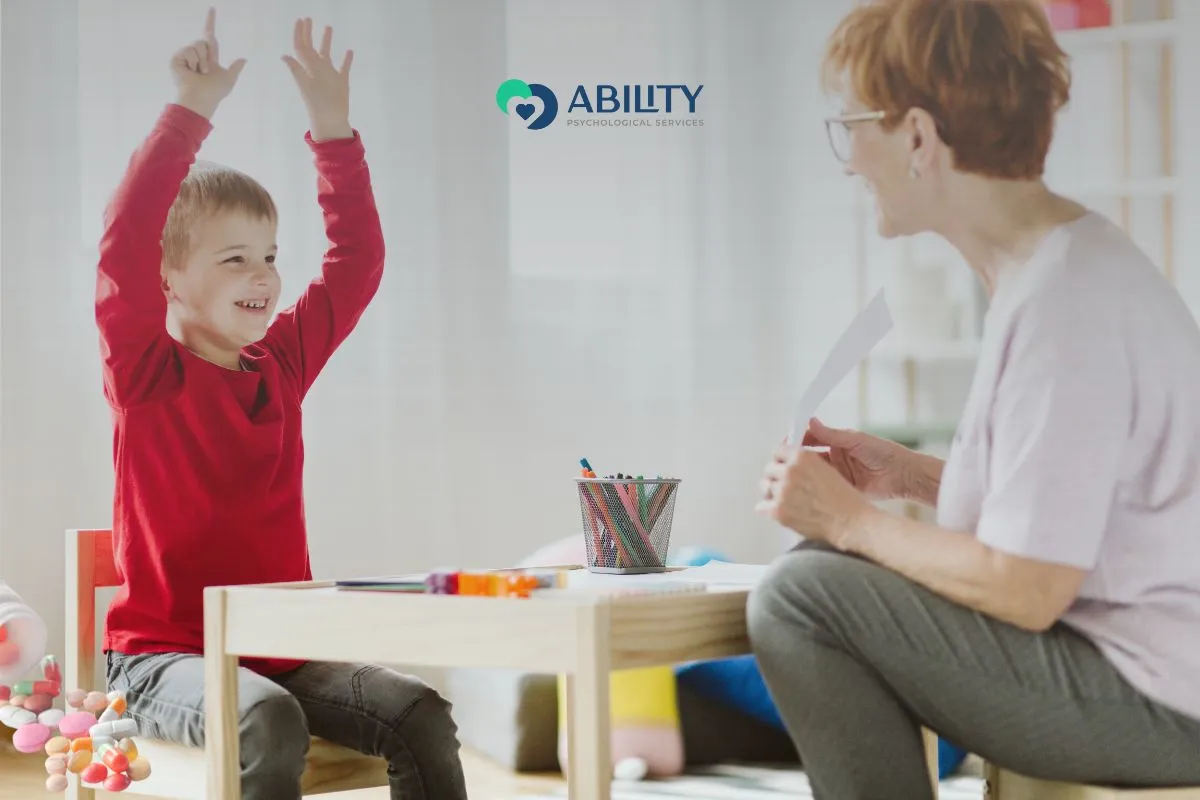As parents, our intuition often serves as our compass in navigating the complexities of child development. When it comes to autism spectrum disorder (ASD), recognizing early signs is crucial for early intervention and support. Every child is unique, and autism manifests differently in each individual, but there are common indicators parents can observe.
With autism diagnoses on the rise, it’s more important than ever for parents to stay informed and advocate for their children’s well-being.
So, how can you tell if your infant is autistic? We will detail the subtle cues and behaviors that could signal autism in young children in this comprehensive guide. Keep reading to learn more!
Early Autism Signs: Understanding Communication Differences

Communication differences serve as crucial early indicators and signs of autism in toddlers. Infants who later develop ASD might exhibit a lack of response to their name, minimal eye contact, or limited engagement in reciprocal smiles or babbling.
As they progress through developmental milestones, difficulties with nonverbal communication become apparent, such as challenges in understanding or using gestures and facial expressions to convey emotions or intentions. Speech delays are common, with some children displaying a complete absence of speech or limited vocabulary.
Additionally, they may struggle with the pragmatic aspects of language, such as initiating and maintaining conversations or understanding social cues. These communication differences can significantly impact social interactions and hinder the formation of meaningful relationships.
Early Autism Signs: Social Variances
Social differences represent key early signs your infant has autism. From infancy, subtle cues may emerge, such as a lack of interest in social interaction, limited eye contact, or reduced responsiveness to social stimuli like smiles or attempts at engagement.
As children grow, difficulties in understanding and reciprocating social cues become more pronounced, leading to challenges in forming and maintaining relationships with peers and adults. Children with ASD may exhibit a preference for solitary activities and struggle with imaginative play or cooperative games.
Moreover, they may have difficulty empathizing with others or understanding social hierarchies and norms. These social differences can impact daily life, from navigating social situations at school to participating in family gatherings.
Early Autism Signs: Understanding Social Differences
Early behavioral differences often serve as vital indicators of autism spectrum disorder (ASD) in children. From infancy, certain behaviors may appear distinct, such as repetitive movements like rocking or hand-flapping, or a fixation on specific objects or patterns.
As children grow, these behavioral differences may manifest in rigid adherence to routines or rituals, resistance to change, and heightened sensitivity to sensory stimuli like sounds, textures, or lights. Additionally, children with ASD may exhibit an intense focus on narrow interests, displaying encyclopedic knowledge about particular topics.
These behavioral differences can impact daily functioning, affecting social interactions, communication, and adaptive skills. The role of healthcare professionals in recognizing these early signs is crucial. It allows for timely intervention and support services tailored to the child’s needs, promoting skill development and enhancing their quality of life.
Understanding the Implications of Early Autism Signs

Autistic characteristics in infants serve as crucial indicators that a child may be at risk of autism spectrum disorder (ASD). Recognizing these signs is essential for timely intervention and support. Early signs can manifest in various domains, including social interactions, communication, behavior, and sensory processing.
Social differences may involve a lack of interest in socializing, limited eye contact, or difficulties understanding social cues. Communication differences could include:
- Delayed speech or language development.
- Repetitive language.
- Challenges in engaging in reciprocal conversations.
Behavioral differences might involve repetitive movements, adherence to routines, or intense focus on specific interests. Sensory differences may include heightened sensitivity or aversion to sensory stimuli.
Understanding these early signs can lead to early diagnosis and access to interventions that can improve outcomes for children with ASD. Early intervention programs often focus on building communication, social, and adaptive skills to maximize a child’s potential and enhance their quality of life.
First Steps: How is Autism Diagnosed?
Autism spectrum disorder is diagnosed through a comprehensive evaluation by healthcare professionals, typically including developmental pediatricians, psychologists, or child psychiatrists. Utilizing a mix of behavioral evaluations, parent or caregiver interviews, and behavior observations of the child aids in the diagnosis process.
The first step in the diagnostic process is a detailed examination of the child’s developmental history, including any concerns voiced by parents or other caregivers and milestones reached. Behavioral assessments help evaluate social communication skills, repetitive behaviors, and other traits linked to ASD. These assessments include the Autism Diagnostic Observation Schedule (ADOS) and the Autism Diagnostic Interview-Revised (ADI-R).
Furthermore, healthcare practitioners may perform standardized evaluations to appraise cognitive functioning, adaptive skills, and speech and language abilities. Carrying out medical evaluations may also rule out any other potential explanations for the observed symptoms.
The Diagnostic and Statistical Manual of Mental Disorders (DSM-5) specifies criteria that a multidisciplinary team ultimately uses to arrive at a diagnosis. Receiving the correct therapies and support services at the right time of diagnosis is essential for improving the lives of people with ASD.
Exploring the Causes of Autism
Research on the precise cause of autism spectrum disorder (ASD) is still challenging and ongoing. Although a single explanation for ASD has not been identified, it is generally accepted that a mix of environmental and genetic variables play a role in its development.
The increased concordance rate of ASD in identical twins compared to fraternal twins suggests that genetic factors are important. Differences in several genes have been linked to ASD, and these differences may have an impact on the structure and function of the brain.
Environmental factors, such as maternal illnesses, exposure to certain drugs during pregnancy, or pollutants, may also raise ASD risk. Furthermore, a higher chance of ASD in offspring has been linked to variables like maternal health during pregnancy and advanced parental age at conception.
In addition, scientists are looking into the possible ways that genetic and environmental variables interact to cause ASD. Ongoing studies seek to further our knowledge of the intricate interactions between the various elements that contribute to the etiology of ASD, even though the precise processes are still unknown.
The Truth About Vaccines and Autism
No, vaccines do not cause autism. Millions of youngsters have participated in extensive studies that have repeatedly demonstrated no connection between vaccinations and autism spectrum disorder (ASD).
Due to dishonest techniques and conflicts of interest, the initial study that showed a link between autism and the MMR (measles, mumps, and rubella) vaccine was completely disproved and retracted. One of the best methods for preventing infectious diseases is vaccination, which has undergone extensive testing to ensure its safety.
Scientists and medical professionals are overwhelmingly in agreement that immunizations do not contribute to autism development.
Chemical Exposure and Autism Risk
The relationship between chemical exposure and autism spectrum disorder (ASD) is complex and not fully understood.
While some studies have suggested a possible link between prenatal or early-life exposure to certain chemicals, such as pesticides or air pollutants, and an increased risk of ASD, the evidence is inconclusive, and more research is needed. Genetic factors are also believed to play a significant role in the development of ASD.
While minimizing exposure to potentially harmful chemicals is important for overall health, it is not currently possible to definitively attribute ASD solely to chemical exposure.
Sleep Challenges in Autism
Autism spectrum disorder (ASD) often coexists with sleep problems, affecting up to 80% of children with ASD. These sleep issues include difficulty falling asleep, frequent night awakenings, and shortened sleep duration.
Contributing factors may include sensory sensitivities, anxiety, irregular melatonin production, or medication side effects. Sleep problems in individuals with ASD can exacerbate daytime behavioral challenges, affect cognitive function, and impact overall well-being.
Addressing sleep disturbances through behavioral interventions, sensory accommodations, and establishing consistent bedtime routines can help improve sleep quality and enhance the quality of life for individuals with ASD and their families.
Tips for Helping Children with Autism Sleep Better
To help children with autism spectrum disorder sleep better, establish a consistent bedtime routine that includes calming activities like reading or gentle music. Create a comfortable sleep environment by minimizing sensory stimuli and using soft bedding.
Ensure a calming atmosphere by dimming lights and reducing noise. Limit screen time before bed, as it can interfere with sleep. Encourage regular exercise and outdoor activities during the day to promote better sleep.
Consult healthcare professionals for guidance on any underlying medical issues or medication management. Implementing these strategies can improve sleep quality for children with ASD, enhancing their overall well-being and functioning.
Exploring Autism Interventions: Options for Support and Development
ASD interventions encompass a range of approaches tailored to address specific needs. Early interventions, such as ABA, focus on improving communication, social skills, and behavior management.
Speech therapy targets language development and communication difficulties. Occupational therapy addresses sensory sensitivities and enhances daily living skills. Social skills training helps individuals navigate social interactions and relationships.
Additionally, educational interventions, such as individualized education programs (IEPs), provide tailored support within school settings.
Autism evaluations are comprehensive assessments conducted by multidisciplinary teams to diagnose ASD, typically involving developmental history reviews, behavioral observations, and standardized assessments.
Contact APS Today
ASD interventions offer a spectrum of support tailored to address individual needs comprehensively. From early behavioral interventions to speech therapy and social skills training, a multifaceted approach can significantly enhance the quality of life. If you’re seeking clarity or support, consider autism evaluations with us, your team at Ability Psychological Services in Oakland, CA. Our comprehensive assessments, conducted by multidisciplinary teams, provide valuable insights and guidance for intervention planning! Contact us today!





